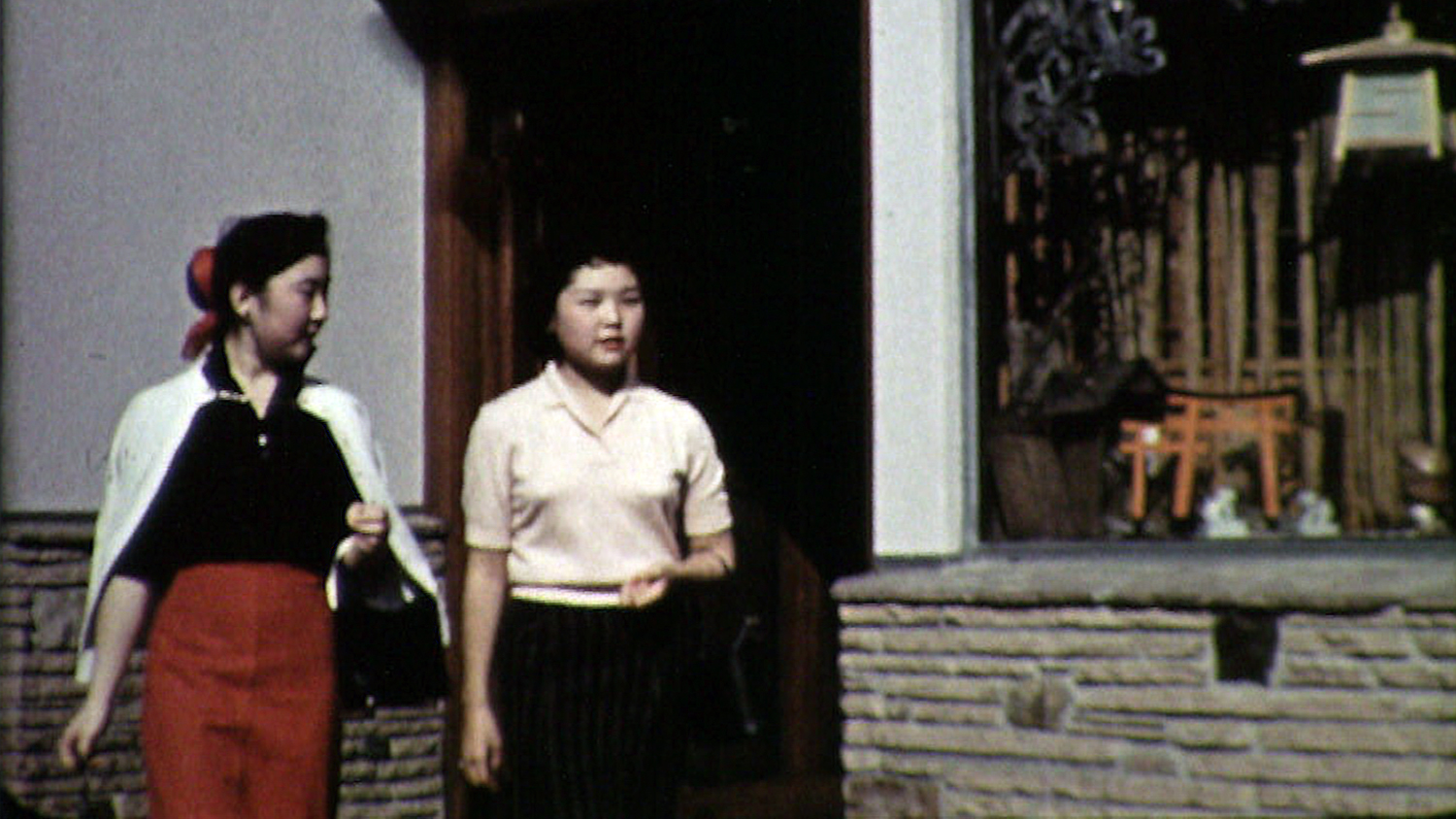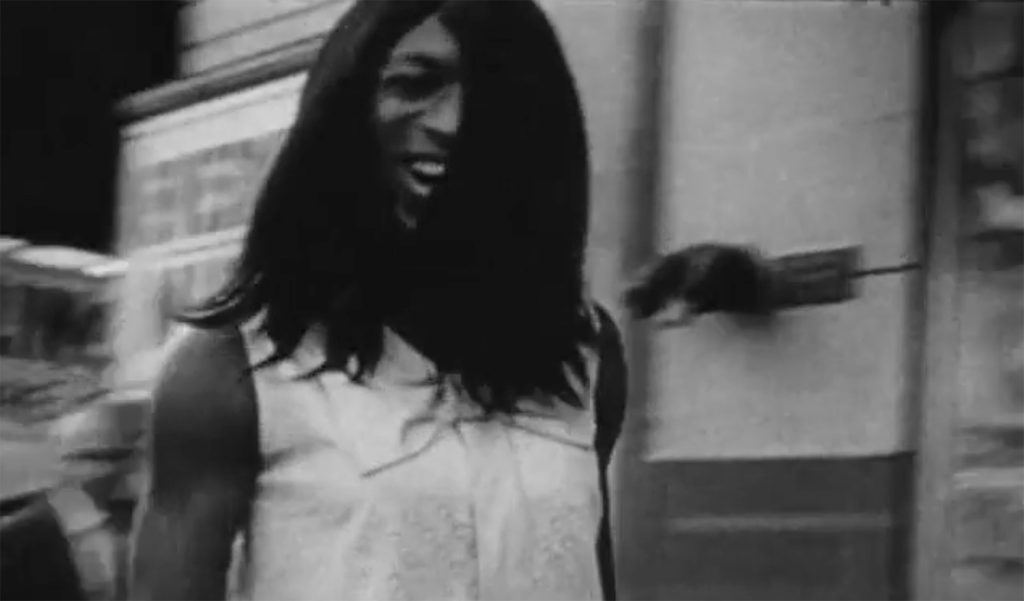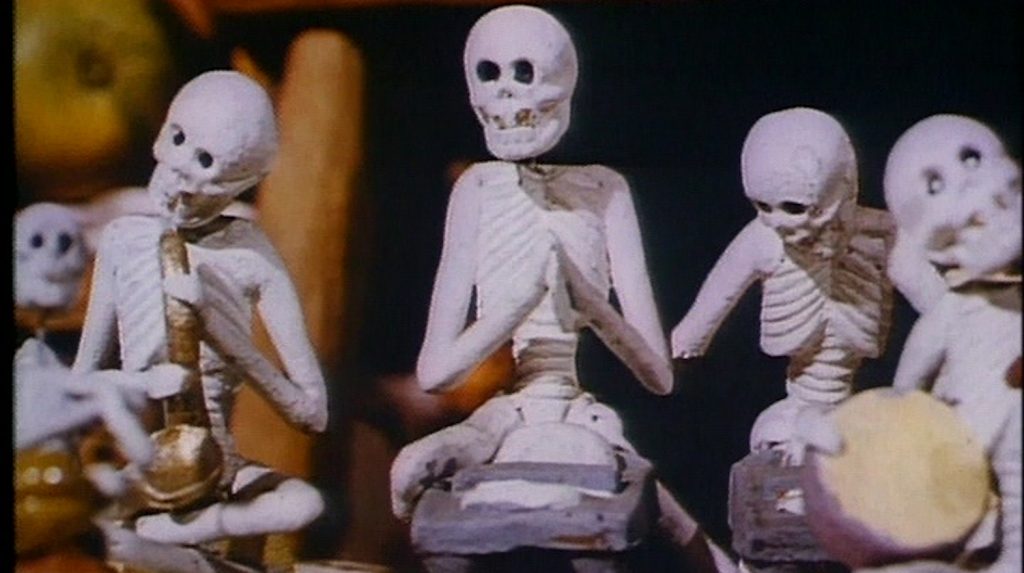A Largely Untapped Universe: Exploring Race in Nontheatrical Films

While most of us associate “movies” with cinematic blockbusters, the vast majority of films made in the United States are not made on Hollywood backlots. These home movies, educational films, workplace training videos and other films offer insights into the American experience that most feature films miss.
A new book, Screening Race in American Nontheatrical Film, explores many of these nontheatrical films and what they can tell us about race in the United States. To learn more about the book, we spoke with Marsha Gordon, a professor of film studies at NC State. Gordon co-edited the book with Allyson Nadia Field, a film studies scholar at the University of Chicago.
[Note: If this Q&A piques your curiosity, you can join Gordon and (NC State alum) Skip Elsheimer of A/V Geeks on Dec. 1 at the North Carolina Museum of Art for a discussion of nontheatrical films – and a viewing of several 16 millimeter films from the 1960s and 70s. You can learn more about the free event here.]
The Abstract: Your book focuses on race in the context of nontheatrical films, and defines those films as “films made for purposes outside of theatrical entertainment.” I don’t really know what that means. Are these made-for-TV movies? Home movies? Instructional videos? How broad is this definition?
Marsha Gordon: Nontheatrical film is a deliberately broad category that includes any film that was not produced to be shown primarily in a commercial movie theater. So the category of nontheatrical film includes educational films, home movies, industry and government films, student films, anthropological films, church films, many documentaries, and so on. Theatrical film was always 35mm, but educational films, student films and some home movies were shot and distributed on smaller gauge (and therefore less expensive) 16mm, which most classrooms, community centers and like organizations could project.
TA: Why are these types of movies important?
Gordon: First of all, they vastly outnumber the films produced in Hollywood – by the thousands. If I may quote from my co-authored introduction: “Nontheatrical films’ very different and less centralized means of production, distribution and exhibition allowed for a fascinating diversity that was never possible in the more controlled, corporate and white-male-dominant environment of Hollywood.”
Because they weren’t being produced just by the major film studios or with the primary aim of making lots of money in as many markets as possible, nontheatrical film better reflects the diversity and concerns of the nation. Hollywood made films that would make money; what they depicted was not what people across the country were experiencing.

Educational films, for example, which became very popular in the post-war classroom, sought to deal with challenges facing Americans in communities across the nation and thus had to, over time, engage with things like class, gender and race inequities. Teachers needed such films to help their students understand the world they were living in. So, as America was dealing with these issues on a national level – with civil rights legislation, for example – films were made to get students to think about such things in the context of their own lives. What makes such films interesting now is looking at how they change over time. A film that engages with race or gender in the 1950s is really different than one from the 1970s, and we can learn a good deal from those changes.
TA: What does looking at race in these films tell us? I mean, is it a reflection on American culture? The culture of film-making?
Gordon: It’s a reflection on both. Some of the richest films we encountered while researching this book were student films produced at UCLA and USC. Not surprisingly, many film students at these schools in the 1960s and 1970s were politically engaged. So where even mainstream educational films might tiptoe around certain issues, student filmmakers dove into a subject without worrying about offending or pleasing their audience. These student filmmakers often went into the communities in which they lived or which they lived just outside of, in this case around Los Angeles, and captured small stories that are revelatory about the ways that race impacted people’s daily lives. You just wouldn’t have seen these kinds of stories on the big screen.
Small, independently produced documentaries, like the film that really inspired this entire collection – Felicia (1965), which I encountered through NC State alumnus Skip Elsheimer’s A/V Geeks Archive – can really change the way you think about a time and place. In this case, the time and place were the Watts neighborhood of Los Angeles before the uprisings that forever transformed that community during the summer of 1965. This film so moved me and my co-editor, Allyson Nadia Field of the University of Chicago, that we deeply researched it, published an article about it, and then decided to continue to put together a collection of essays that grew out of our belief that there were many other films like this one that were made and have been lost to history, but which are valuable, instructive, and moving to rediscover.
TA: This is a book explicitly about race, and you’re white. How did you get involved in the project, and how did you approach the material, given your lack of lived experience as a person of color?
Gordon: What we hoped to do in this collection is to bring attention to the fact that most scholarship about nontheatrical film had been focused on white subjects, mirroring in some ways the history of Hollywood and the scholarship about films produced primarily for theatrical consumption. The only way to do that was to shift the focus away from white subjects to allow others to come into focus. Some of the films discussed in the book were made by white filmmakers and were even made primarily for white audiences – we left it to our diverse group of authors to determine how they would address the racial politics of their individual chapter’s subjects, and that resulted in a collection of essays that has a really nice range of subject matter, historical context, and film choices.

My co-editor and I wrote the introduction together, but the collection consists of 18 chapters written by archivists and scholars, including many authors of color. Of course, lived body experience influences the way we experience media of all sorts. But studying anything is first and foremast a matter of conducting research and producing knowledge about that material. We hope that the way this collection shines a light on this rich, vast and still largely untapped universe of films will encourage other scholars to continue making rediscoveries and bringing these films into the conversation about film and social history; they really deserve a prominent place in both.
TA: The scholarly essays collected in this book cover a wide range of subjects. What are one or two insights that really jumped out at you as you were working with contributors?
Gordon: There are so many discoveries in this collection of essays that it’s hard to pick just a few. I think that Noah Tsika’s chapter on the recently preserved (by UCLA) film Behind Every Good Man, does an exceptionally good job of thinking about race in relation to gender and sexuality in ways that are startlingly relevant today. Crystal Mun-hye Baik does really interesting work with Asian American home movies as they are presented in digital form by the Center for Asian American Media’s Memories to Light project. Dan Streible’s essay about a film that has become a bit of a cult favorite, Ro-Revus Talks About Worms, which we’ll be showing on 16mm at the North Carolina Museum of Art at a free event on December 1, excavates the extraordinarily rich history of a health education campaign in neighboring South Carolina.
TA: Is this book accessible to people who just like movies, or is it really just for film scholars?
Gordon: We worked very hard to make the collection accessible, not least by working with archives and authors to make as many of the films we discuss available by digitizing them and putting them online, creating an easy way to access them through the Duke University Press website for the book. If you watch some of these films, many of which were intended for very wide consumption, I think you’ll see that the material itself is enjoyable and compelling. And the chapters aim to make them even more so by sharing information about their histories and context.
- Categories:


